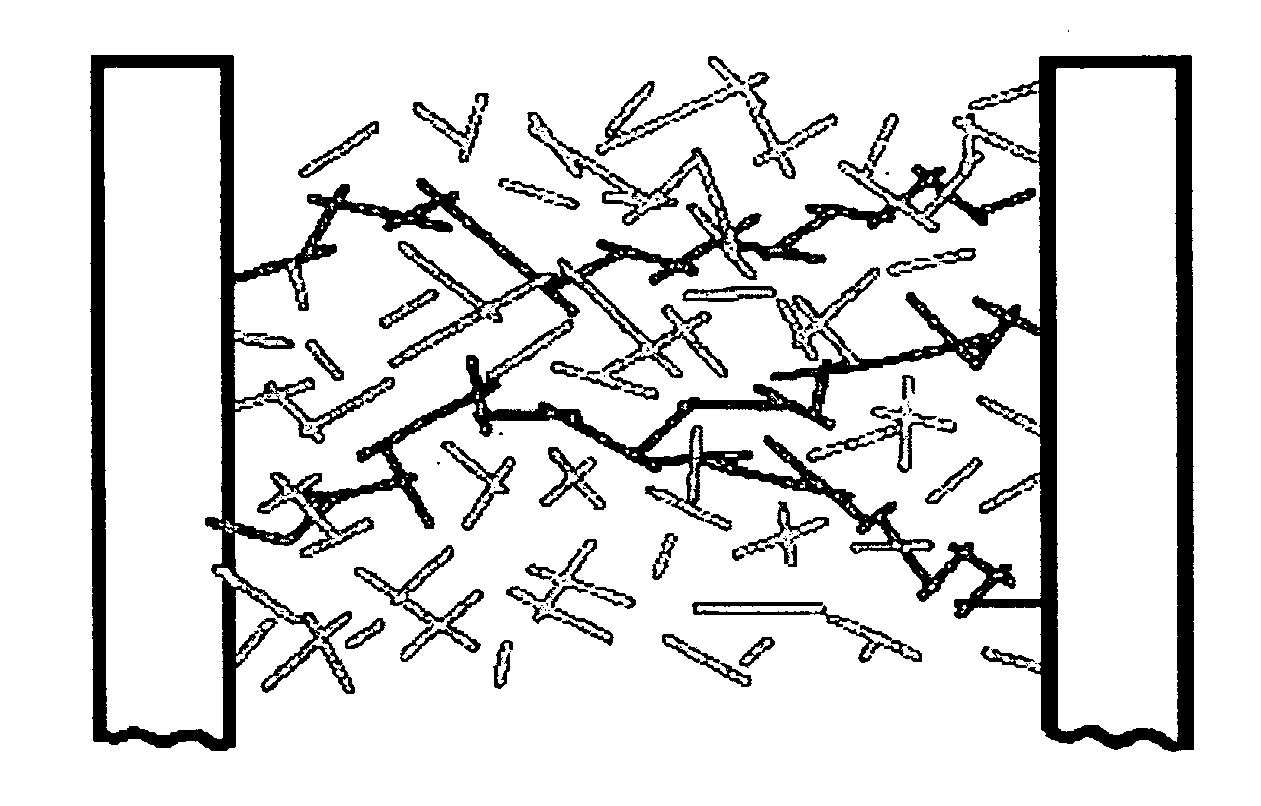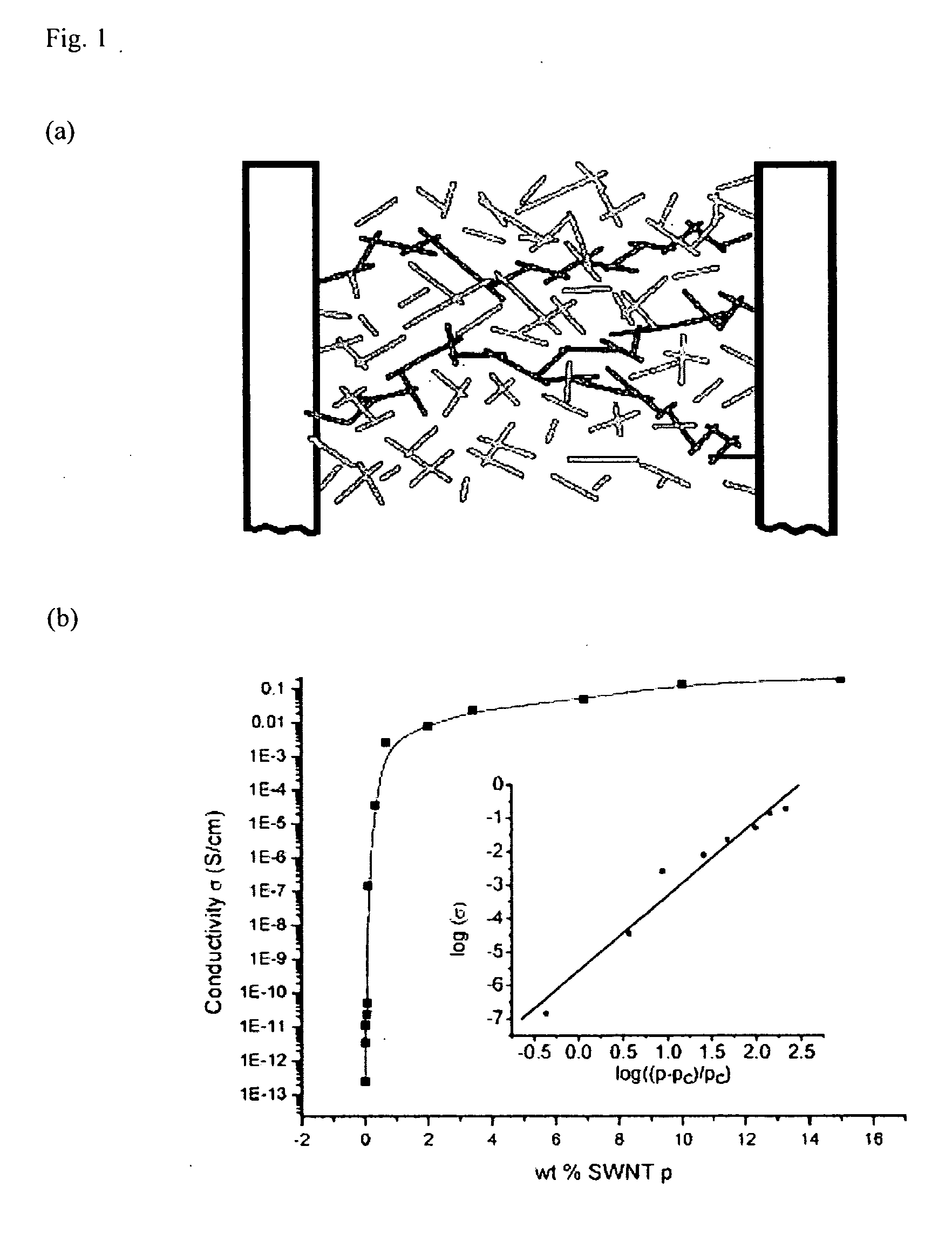Boron-Doped Single-Walled Nanotubes(SWCNT)
a single-walled carbon nanotube, boron-doped technology, applied in the direction of nanoinformatics, coatings, conductors, etc., can solve the problem that not many atom types can be substituted for carbon in the nanotube wall, and achieve the effects of increasing the free carrier concentration, increasing the electrical and thermal conductivity, and enhancing the electron population
- Summary
- Abstract
- Description
- Claims
- Application Information
AI Technical Summary
Benefits of technology
Problems solved by technology
Method used
Image
Examples
example 1
B-SWCNT Material Characterization (e.g., B-Content in the Tube Wall)
[0223]The B-content in the SWCNTs has been determined by transmission electron microscopy (EELs) and neutron activation methods. Some fraction ˜½ of the boron in the electrodes is preferentially lost to carbon particles and amorphous carbon also produced in the ARC reaction. Electrical conductivity measurements in thin films of tangled bundles of SWCNTs deposited on glass substrates indicate a factor of 2-10 increase in the conductivity within the sheet. Raman scattering studies of the B-SWCNTs show an increase in D-band strength (˜1350 cm−1) that correlates with the amount of boron introduced into the electrode. The sharp line character of the nanotube G-band is maintained upon B-doping, indicating that the B-substitution maintains the integrity of the structure in the tube wall. So-called van Hove (H) optical absorption bands are observed in the B-SWCNTs, but they appear upshifted in photon energy relative to thei...
PUM
| Property | Measurement | Unit |
|---|---|---|
| reaction time | aaaaa | aaaaa |
| currents | aaaaa | aaaaa |
| length | aaaaa | aaaaa |
Abstract
Description
Claims
Application Information
 Login to View More
Login to View More - R&D
- Intellectual Property
- Life Sciences
- Materials
- Tech Scout
- Unparalleled Data Quality
- Higher Quality Content
- 60% Fewer Hallucinations
Browse by: Latest US Patents, China's latest patents, Technical Efficacy Thesaurus, Application Domain, Technology Topic, Popular Technical Reports.
© 2025 PatSnap. All rights reserved.Legal|Privacy policy|Modern Slavery Act Transparency Statement|Sitemap|About US| Contact US: help@patsnap.com



